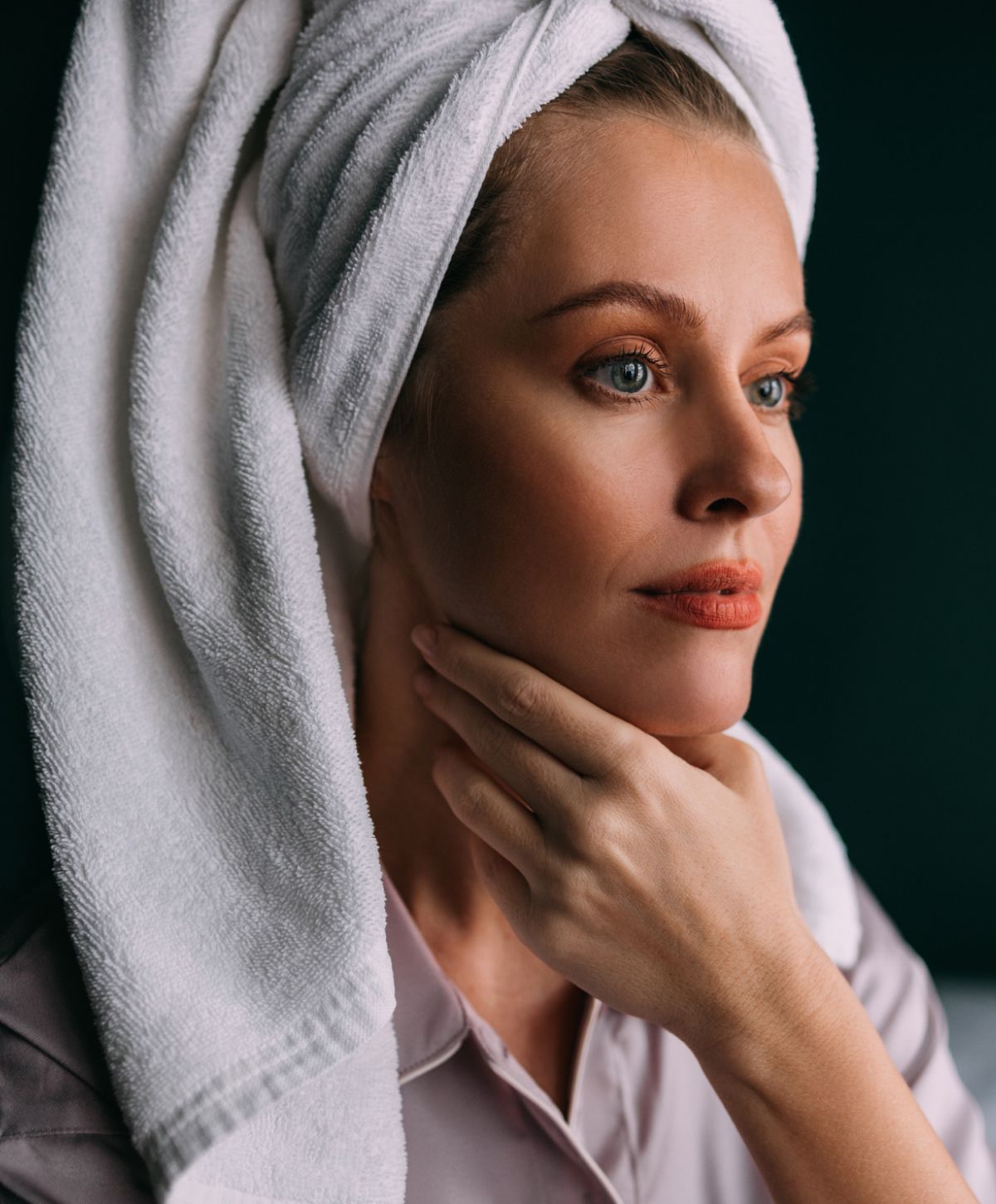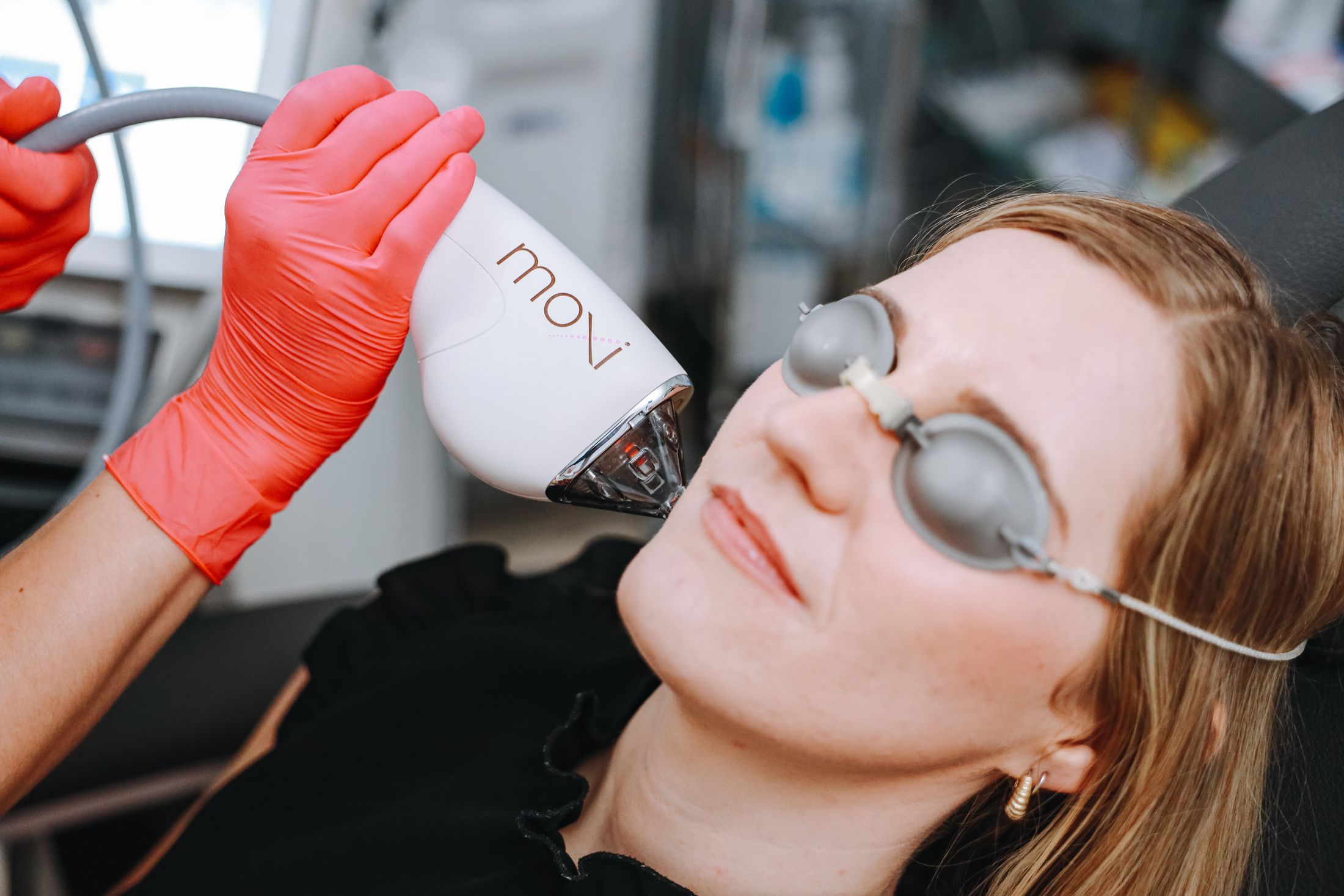
Laser skin resurfacing
In Charlottesville, VA

In Charlottesville, VA
As we age, our skin loses its fresh and smooth appearance because we lose collagen, develop areas of hyperpigmentation from sun exposure, and form wrinkles and creases. Today more people than ever are avoiding invasive procedures like the facelift because there are effective non-surgical options like our Charlottesville laser skin resurfacing treatment that allow them to return to work quickly with little downtime and discomfort.
Fractional ablation with a CO2 laser uses energy in the form of heat to precisely remove layers of damaged skin, which can be used to treat sun damage, fine and deep wrinkles, scars, and skin lesions.
Nonablative lasers like Moxi are a less aggressive approach to CO2 lasers that can treat similar conditions with less downtime and discomfort, and can help patients avoid more invasive treatments like plastic surgery.
Fractional ablation with a CO2 laser can be used to treat the following conditions:
Laser skin resurfacing can also be performed on body parts other than the face, including the neck, decolletage, chest, arms and hands for skin rejuvenation.
CoolPeel® is an advanced way to safely and comfortably deliver the benefits of a traditional CO2 resurfacing treatment by targeting just the superficial layer of skin tissue, damaged skin is removed using heat, revealing younger and healthier looking skin. Many advances have been made to improve the side effects of CO2 treatments but ONLY the CoolPeel can deliver a fractional ablative treatment without the downtime. There is minimal risk of hyperpigmentation, demarcation or induced infection.
CoolPeel can be performed on the lips for rejuvenation, resulting in fuller lips with improved color and a more defined vermillion border. This treatment pairs extremely well with lip filler.

Moxi is a nonablative fractionated laser made by the manufacturer Sciton that delivers energy in the 1927nm wavelength, which targets water within cells to stimulate the natural healing processes in skin. Because the laser is nonablative and is limited to the superficial layers of the skin (up to 200nm), it can delivery energy comfortably to treat the initial signs of sun damage and aging regardless of the skin type. This laser is also perfect prejuvenation, which helps prevent the signs of aging in younger patients and helps them maintain beautiful skin with little to no downtime or discomfort. Moxi is optimally paired with BBL Hero.

The nonablative Moxi laser can be used to treat the following conditions:
With laser skin resurfacing Charlottesville patients can also have this performed on body parts other than the face, including the neck, decolletage, chest, arms, hands, and legs for skin rejuvenation.
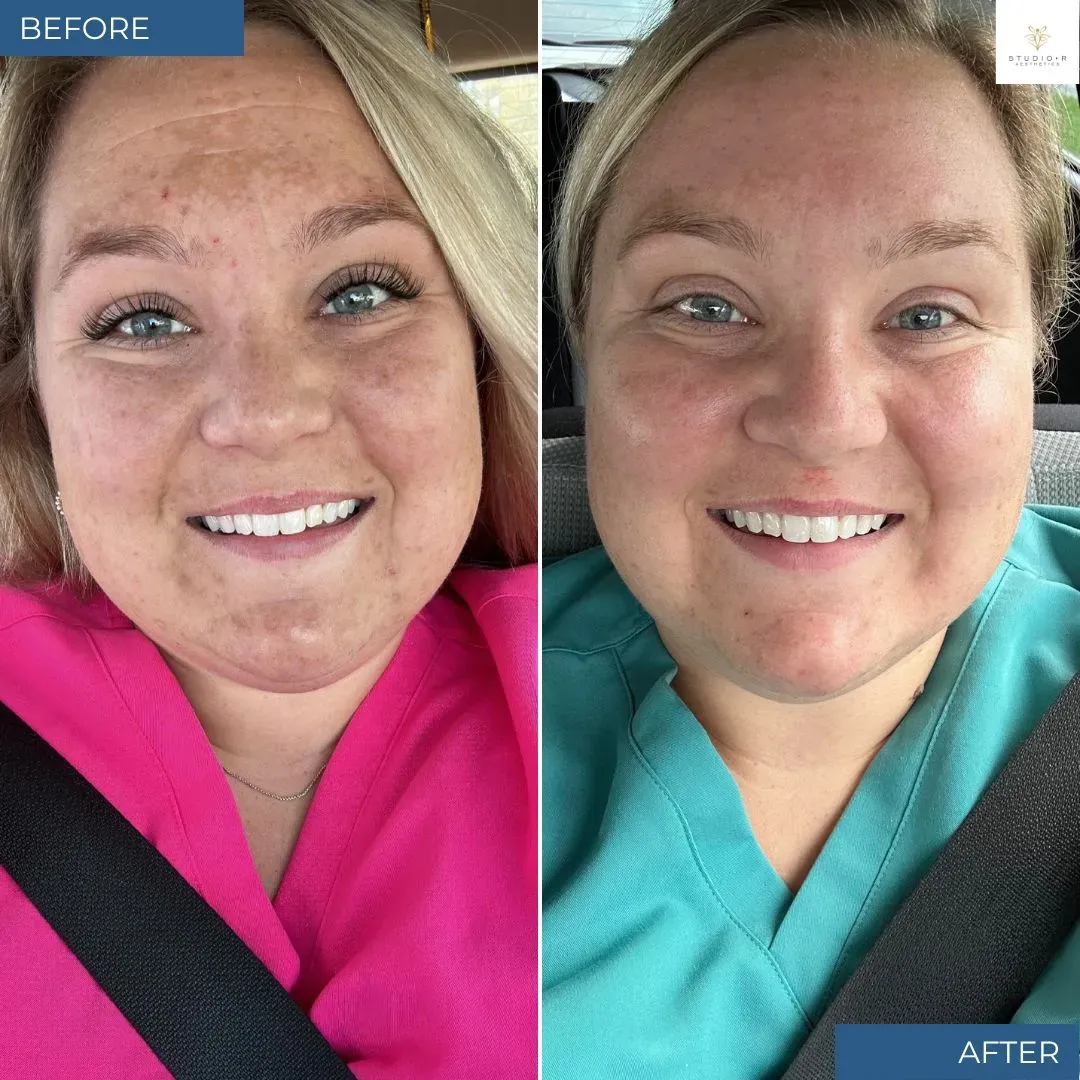
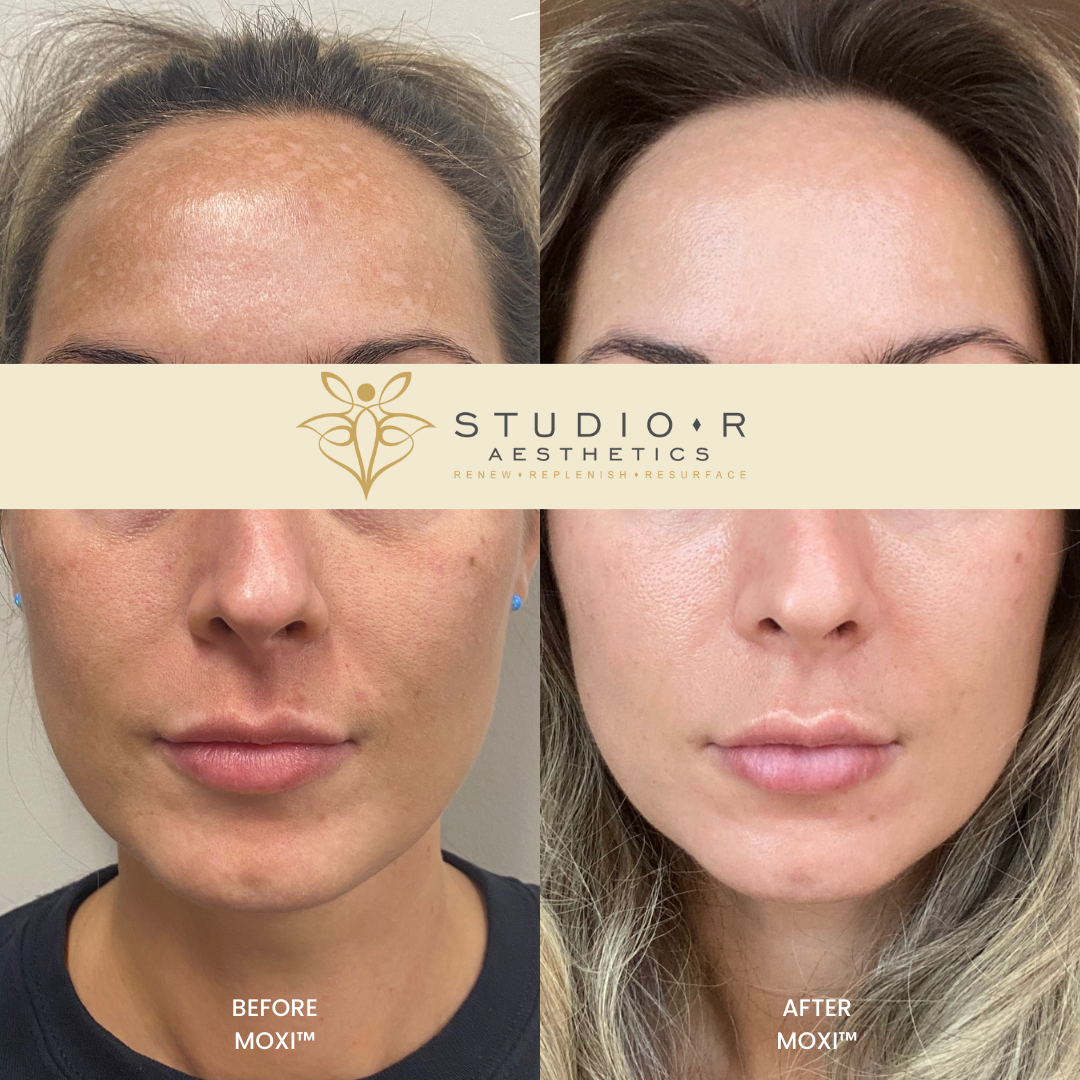
Moxi can be used on any skin type from Fitzpatrick I-VI, any time of the year.
We offer two primary types of fractional ablation with a CO2 laser at Studio R Aesthetics, with the primary difference being how deep we perform the ablation.
The Coolpeel treatment is limited to the epidermal layer and does not reach the epidermal-dermal junction, where the melanocytes are found. Because we are limiting treatment to the epidermis, the Coolpeel can be performed on any skin type with minimal risk of postinflammatory hyperpigmentation. Downtime is minimal and patients typically look like they have a sunburn with rough skin for 2-3 days.
The Deka treatment goes deeper into the dermis, beyond the epidermal-dermal junction. This laser skin resurfacing treatment can only be performed on Fitzpatrick I-III patients because of the risk of PIH in patients with a higher Fitzpatrick type. Patients typically experience seeping and skin crusting for up to 10 days after more aggressive treatments.
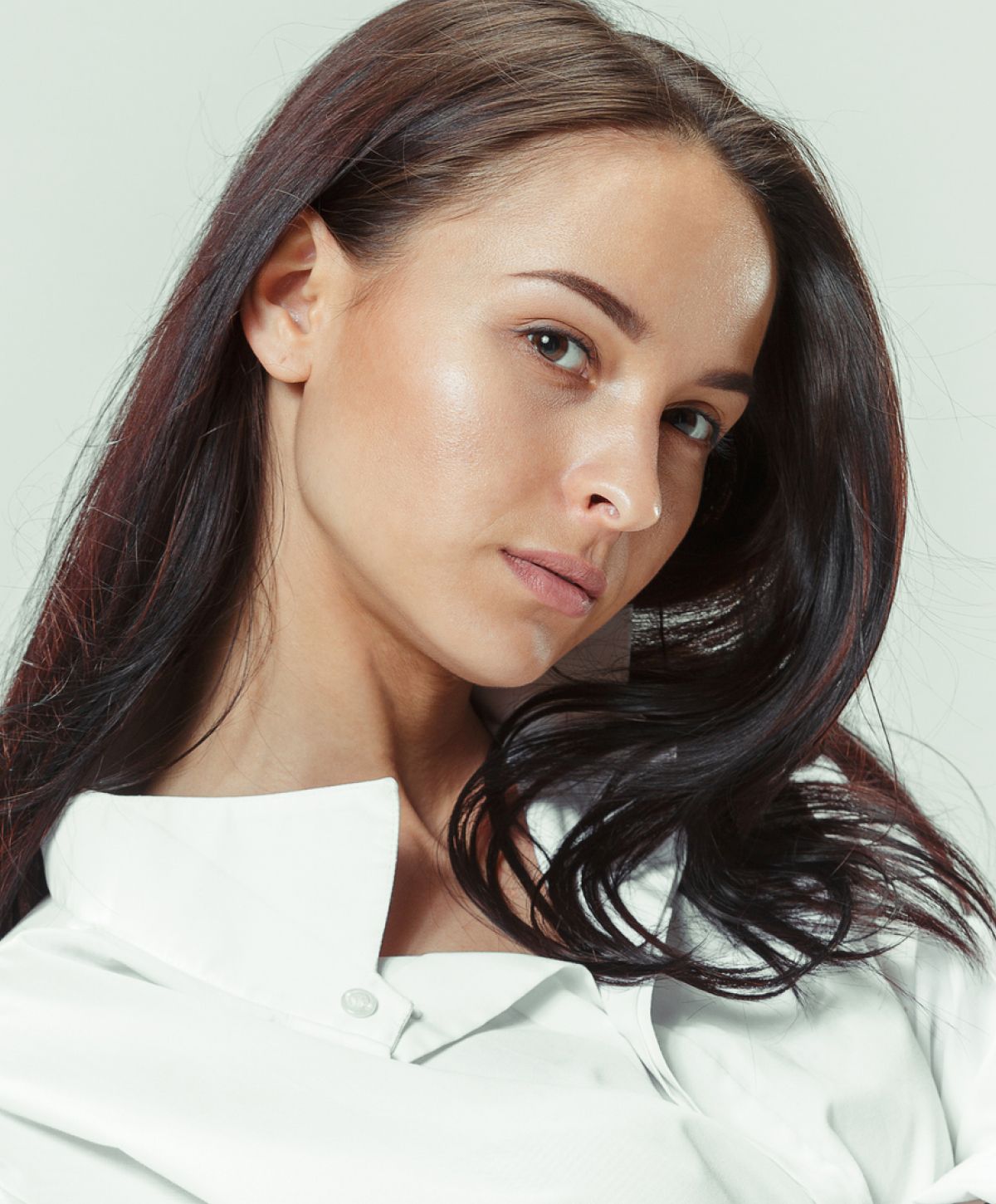
At Studio R Aesthetics, we ensure that our patients have access to treatments without fear of intolerable discomfort.
Topical anesthetic is only needed for Moxi treatments when we use more aggressive settings. Topical anesthetic is applied for 30 minutes prior to Coolpeel treatements and 60 minutes for Deka treatments.
We apply the strongest topical anesthetic available to the treatment site for at least 30-60 minutes prior to performing the procedure, which desensitizes the nerve endings in the epidermis and reduces sensations from laser skin resurfacing treatments.
We can use a Chiller device to blow cold air at -30 degrees on the treatment area, which further desensitizes the nerve endings and reduces pain. Pronox cannot be used during laser treatments due to the risk of fire.
There are both risks and complications associated with all laser treatment procedures of the skin.
Although infection following laser skin treatment is unusual, bacterial, fungal, and viral infections can occur. Herpes simplex virus infections around the mouth or other areas of the face can occur following a more aggressive laser treatment. This applies to both individuals with a past history of Herpes simplex virus infections and individuals with no known history of Herpes simplex virus infections in the mouth area. We typically prescribe valacyclovir prior to aggressive fractional ablation treatments.
Although normal healing after the procedure is expected, abnormal scars may occur both in the skin and deeper tissues. In rare cases, keloid scars may result. To minimize the chances of scarring, it is critical that all patients follow the post-treatment instructions provided by our staff.
During the healing process, there is a slight possibility that the treated area may become either lighter (hypopigmentation) or darker (hyperpigmentation) in color compared to the surrounding skin. This is usually temporary, but, on a rare occasion, it may be permanent.
Redness (erythema) or swelling (edema) of the treated area is common and may occur. There also may be some bruising.
Laser energy can produce burns. Burns are rare yet represent the effect of heat produced within the tissues by laser energy. Additional treatment may be necessary to treat laser burns.
The length of your Charlottesville laser skin resurfacing treatment depends on the individual’s needs and the body parts treated. Typically, patients will need 30-60 minutes for topical numbing. The CooPeel treatment typically takes 5-10 minutes, whereas the more aggressive Deka treatment typically takes 30 minutes.
Face, neck, decolletage, chest, arms, and hands. Laser skin resurfacing treatments can also be performed on scars and stretch marks on just about any part of the body.
For the CoolPeel treatment, most people return to work the day after their treatment. Post-treatment, the patient's skin will be red and feel hot like it is a bit sunburned for up to 3 days. For the Deka treatment, there can be skin, redness (erythema), swelling (edema), and weeping of the treated area is common and can last up to 7 days. There also may be some bruising and crusting of the skin during the same time period.
After being treated with laser skin resurfacing Charlottesville patient's skin will be refreshed, revitalized and enhanced. Over the course of several weeks, new layers of collagen will begin to plump and volumize depleted skin contours, firming up your complexion so it appears more youthful and smooth. The skin’s overall tone and texture will be superior to that which you had prior to treatment. Over 1-3 months, you may notice a subtle lift with reduced skin laxity and wrinkles. It is recommended that you undergo a series of treatments to experience full, comprehensive benefits. CO2 laser treatments are an effective way to avoid more invasive treatments like plastic surgery.
Accutane is a prescription medication used to treat certain skin diseases. This drug may impair the ability of skin to heal following treatments or surgery for a variable amount of time even after the patient has ceased taking it. Individuals who have taken the drug are advised to allow their skin adequate time to recover from Accutane before undergoing laser skin treatment procedures.
Sun exposure or use of a tanning bed may increase the risk of side effects and adverse events related to laser treatments. Use of a zinc oxide-based sunscreen of at least SPF 50 is recommended both before and after laser treatment. We recommend ZO or SkinBetter Science sunblock.
The Studio R app helps our Rewards Program members:
Start getting rewarded!
